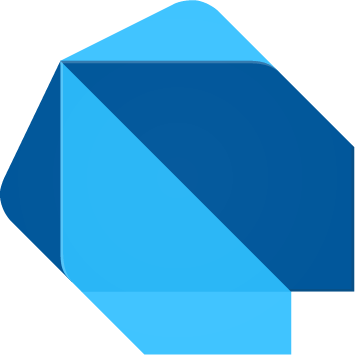Native applications are those written in the official languages of the operating system that are compiled and executed in the device's processor. Dart, although developed by Google, is not considered an official Android language, unlike Kotlin or Java. However, it successfully pretends to be, using the capabilities of Flutter: it compiles to binary code and draws native iOS and Android interface elements on your smartphone screen. The authenticity is much higher than with any other cross-platform development tool. The application will be indistinguishable from the native one - navigation, menus, checkboxes, and other details will be exactly the same as in iOS and Android. In addition, it will be able to support complex native animations, faceID and touchID protection, and even gestures.

DART
Dart is a universal tool created by Google as an alternative to JavaScript. It can be used to write not only websites and apps for iOS and Android, but also command line utilities (CLI) and server applications. Nowadays, Dart programming is most often used when you need to write a cross-platform application in Flutter, a proprietary Google framework.
Dart is a programming language without which it is impossible to work with Flutter, and vice versa. The proprietary framework for cross-platform development for Android and iOS applications created by Google is even younger than Dart. Flutter was released in 2018, but many Dart developers are already busy creating native applications on this framework. Here are five reasons to choose Flutter and Dart for cross-platform app development:
With Flutter, developers create expressive and flexible interfaces that provide a good UX/User Experience. To do this, they have out-of-the-box tools for fine-tuning all the details, as well as a 60 fps graphics processor that smoothes animations and improves the experience of interacting with the application.
"Hot reboot" is the main advantage of the SDK (software development kit) of the Dart virtual machine. This feature allows you to change the code in an abandoned application, which significantly increases the speed of UI development and testing. To check the front-end part for errors, there is an autotest. They reduce the number of bugs that appear in Dart compared to JavaScript. In addition, if an autotester or tester finds a bug in the iOS version of an app, it's enough to fix it here so that it doesn't appear in the Android version.
Developing a cross-platform app is always cheaper than developing two versions. You'll save not only money by paying one Dart development team instead of two iOS and Android programmers, but also time. With Flutter, your application will have one code base and two versions for two OSes that differ by 30% due to different interface design. The total development cost savings will be 20-50% and will be higher the easier it is to realize your idea. Besides, Dart makes not only websites but also applications faster. The speed of downloading and running a Flutter app will be almost the same as if it were written in Swift and Kotlin, the new powerful native languages for iOS and Android. The asynchronous nature of Dart applications allows them to simultaneously process server requests, file accesses, and APIs. At the same time, development on Flutter will give you the opportunity to launch a project on both platforms faster than creating a native application for only one of them.
Google is doing its best to make Flatter and Dart popular. While they don't yet have as large a community as other languages and frameworks, there is plenty of available documentation, tutorials, and courses.
Dart is a versatile and functional, yet simple programming language that is only a matter of time before it becomes more popular. It is suitable for creating startup prototypes, developing complex websites, and, of course, native cross-platform applications with excellent UI/UX.


